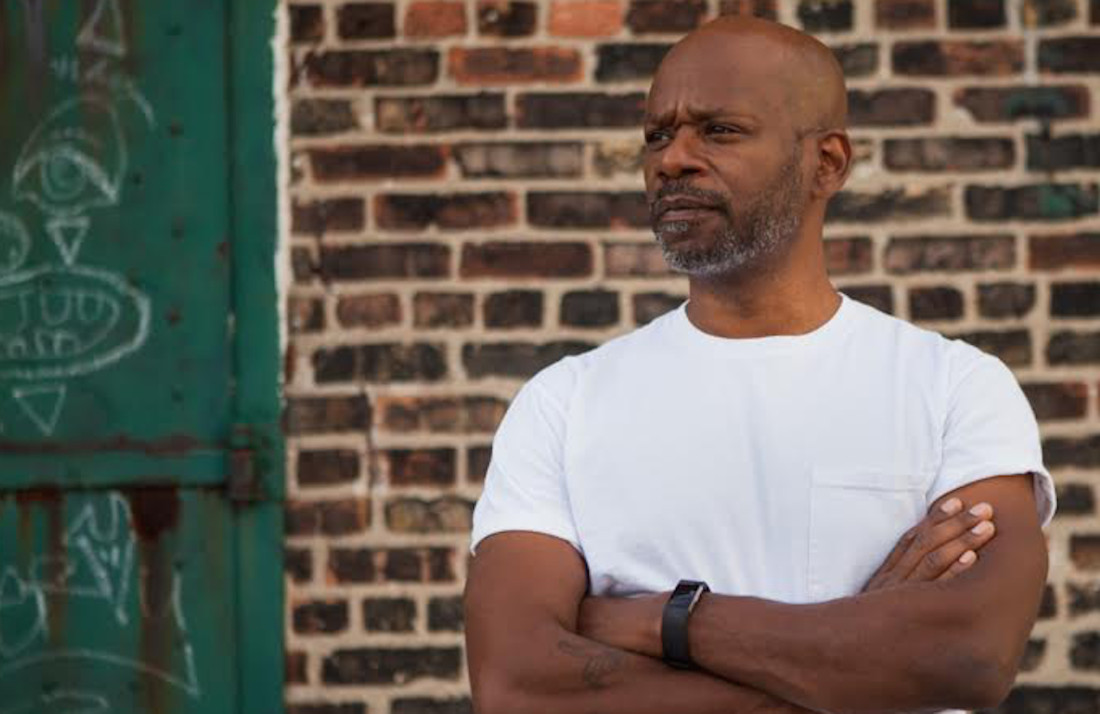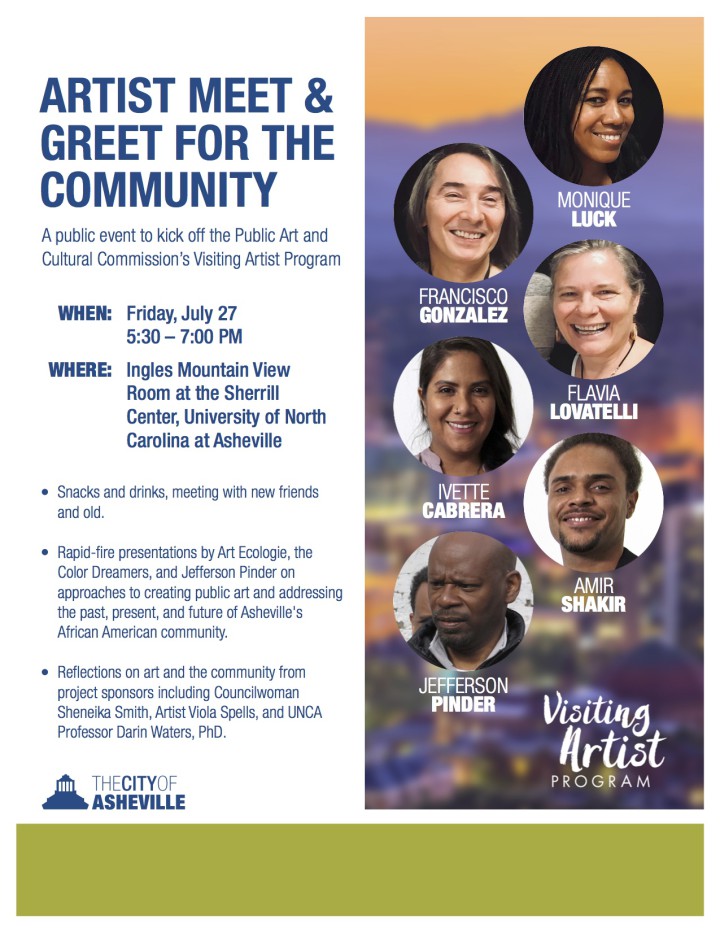Asheville’s public art is sometimes beloved (the mother pig and piglet at Pack Square) and sometimes derided (the “Deco Gecko” at Pritchard Park), but those pieces of viewable-by-all works are part of the city’s DNA. So, when the city of Asheville’s Public Art & Cultural Commission announced its 2018 Visiting Artist Program, part of the idea for that initiative was to “enhance underserved communities [and] address needs in the city’s public art collection,” according to the call for proposals. It also set in motion a mission to create public art that emphasizes public input.
“The way we conceived the project was that it would be done in collaboration with the African-American community and also with local artists,” says Jay Miller, chair of the commission. “We see that as a mentorship or internship opportunity where we’re compensating the local artist to help execute the project, but also gaining significant experience in the public art process at a national level.”
Three finalists were recently selected, including Jefferson Pinder; the team of Monique Luck, Flavia Lovatelli and Francisco Gonzalez; and the team of Amir Shakir and Ivette Cabrera. Pinder, from Chicago, is an African-American artist who creates performances, videos and “objects that challenge viewers to think critically about our highly polarized society,” according to his website. Luck, Lovatelli and Gonzalez are members of the eco-conscious collective Art Ecologie Group lcoated in Columbia, S.C.. Luck works in mixed media, Lovatelli is a self-described pioneer recycler and sustainable artist, and Gonzalez, a native of Mexico, now based in Charlotte, also works in mixed media. Shakir and Cabrera, aka mural duo The Color Dreamers, are based in Miami.
As evidenced by the ranges of genres represented by the finalists, the call for this year’s Visiting Artist Program left the type and medium of the to-be-commissioned work open. Committee members looked at the current stable of public art in Asheville and started with the question “What’s missing from that set?” Miller says. “As it evolved, it became clear that it needed something that addressed underrepresented communities.”
Based on that realization, it was determined that the Visiting Artist Program — for which $50,000 has been secured — start with a focus on the local African-American citizenry and their collective story. “We [backed] away from what we thought the project needed to be and turned that over to the community,” says Miller. “Really what this is is a public engagement process. … We’re conceiving of the artwork to be just as much about that process as it is about that final product.”
The selection team, charged to review the artist applications with that criteria in mind, includes history professor Darin Waters and art professor Brent Skidmore, both from UNC Asheville; Viola Spells from the city’s African-American Heritage Commission; City Council member Sheneika Smith; Katie Cornell, development manager at the Center for Craft; Shirley Whitesides, Delta House Life Development of Asheville chairperson; Ron Laboray, painting and drawing professor at Western Carolina University; Steph Monson Dahl, Riverfront Redevelopment Office director; and Michael Carter, Green Opportunities Youth Corps case manager. “There are already several community organizations telling the story of African-American heritage in places like The Block and the East End, Southside and Burton Street,” Waters said in the city’s announcement of the project. “We need to ask ourselves: ‘Can we use the Visiting Artist Program to add to the engagement of the community and our local artists in these projects?’”
The finalists will all visit Asheville Thursday-Saturday, July 26-28, during which time they’ll tour a number Asheville neighborhoods and areas. “We have a pretty rigorous schedule set up. They’ll be meeting with various stakeholders … learning about different perspectives and also looking at potential sites,” Miller explains. Possible areas of focus are the East End, Southside and Shiloh, but the story of Asheville’s African-American neighborhoods also includes places like Stumptown, which no longer exists (though acknowledgement of the historical significance of such a bygone locale could be the emphasis of the commissioned work).
The debate around location has also led to questions of whether the art should center on the presence of Asheville’s African-American residents and neighborhoods, or if its purpose should be to create a space for coming together. “The African-American community means different things, and part of the site-visit process is to figure out what that means,” says Miller.
He continues, “We’re also leaving open what form the artwork takes. It doesn’t have to be a sculpture or something permanent, It could, in theory, be a performance. It could include the community in some way.” The aim of the site visits is to inform proposals by the finalists — based on input and guidance from residents — for what sort of public work they hope to create.
Following their Asheville tour, the artists will submit their proposals, after which there will be more opportunities for community input, participation and feedback, “and that will ultimately inform the selection committee’s decision,” says Miller.
While it’s unusual for artists to turn in project ideas as the second phase of a selection process, that was a deliberate decision. Early advice to the commission, from conceptual artist Mel Chin and his wife, Helen Nagge, “was to sit back and listen and let the project take shape in response to [community voices],” Miller says.
So, when the selection team started looking at applications, “We narrowed it down to the kind of artist and the kind of work that fit the nature of the project,” Miller says. While the genre, material and design are open-ended, it’s attracted three strong finalists who have already worked in such a capacity and are on board to move forward with a collaborative vision of public art.





Before you comment
The comments section is here to provide a platform for civil dialogue on the issues we face together as a local community. Xpress is committed to offering this platform for all voices, but when the tone of the discussion gets nasty or strays off topic, we believe many people choose not to participate. Xpress editors are determined to moderate comments to ensure a constructive interchange is maintained. All comments judged not to be in keeping with the spirit of civil discourse will be removed and repeat violators will be banned. See here for our terms of service. Thank you for being part of this effort to promote respectful discussion.